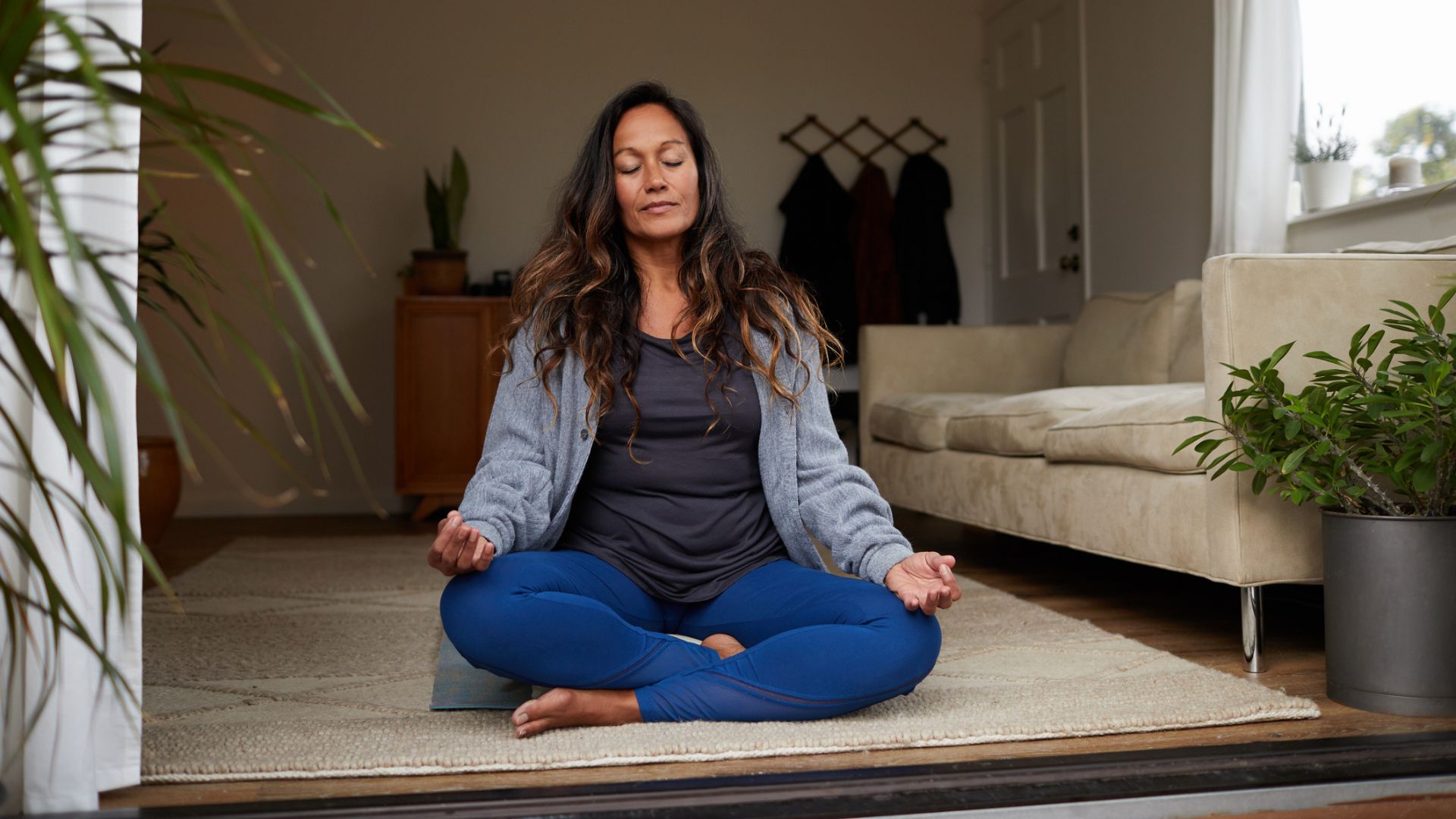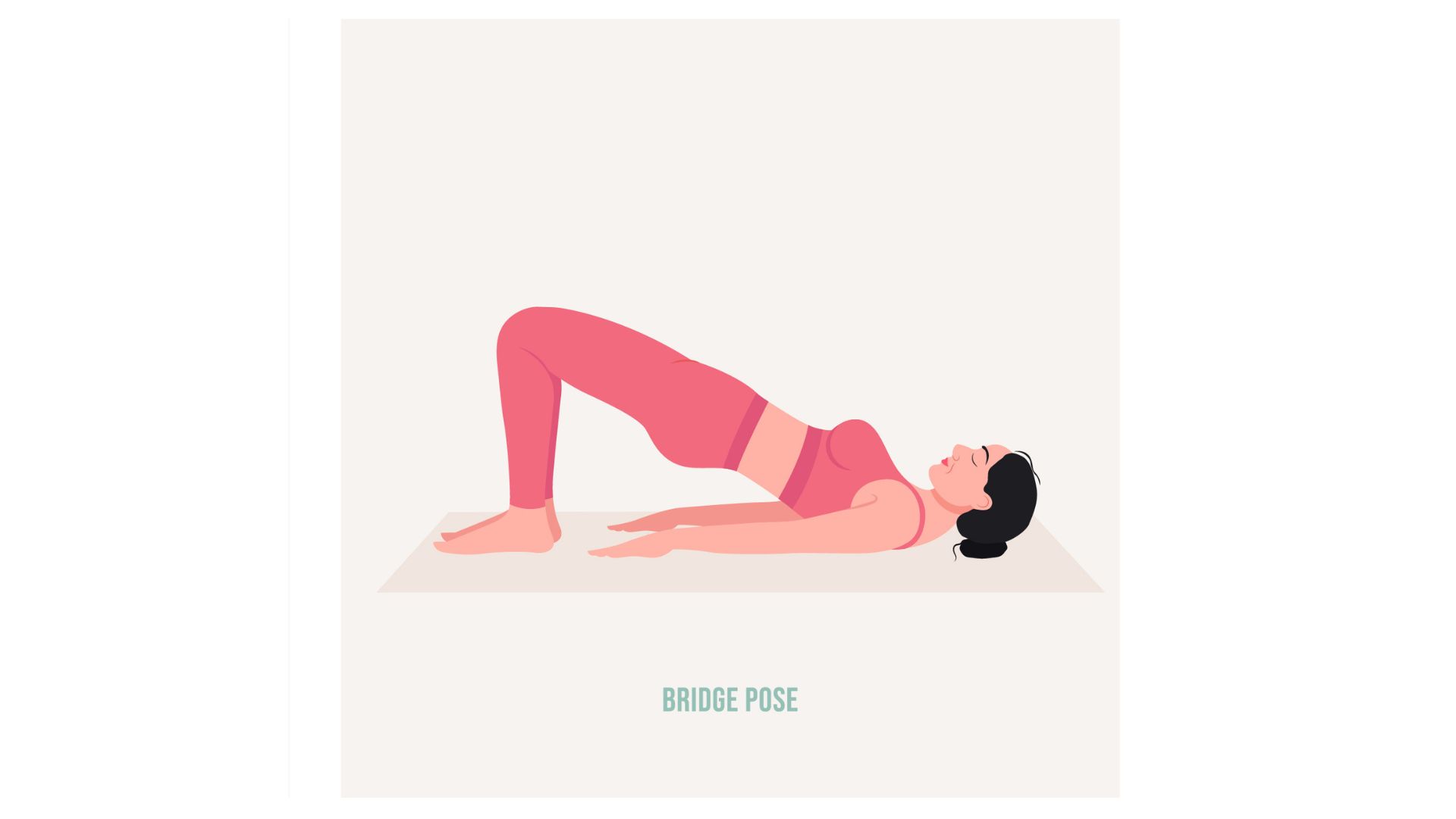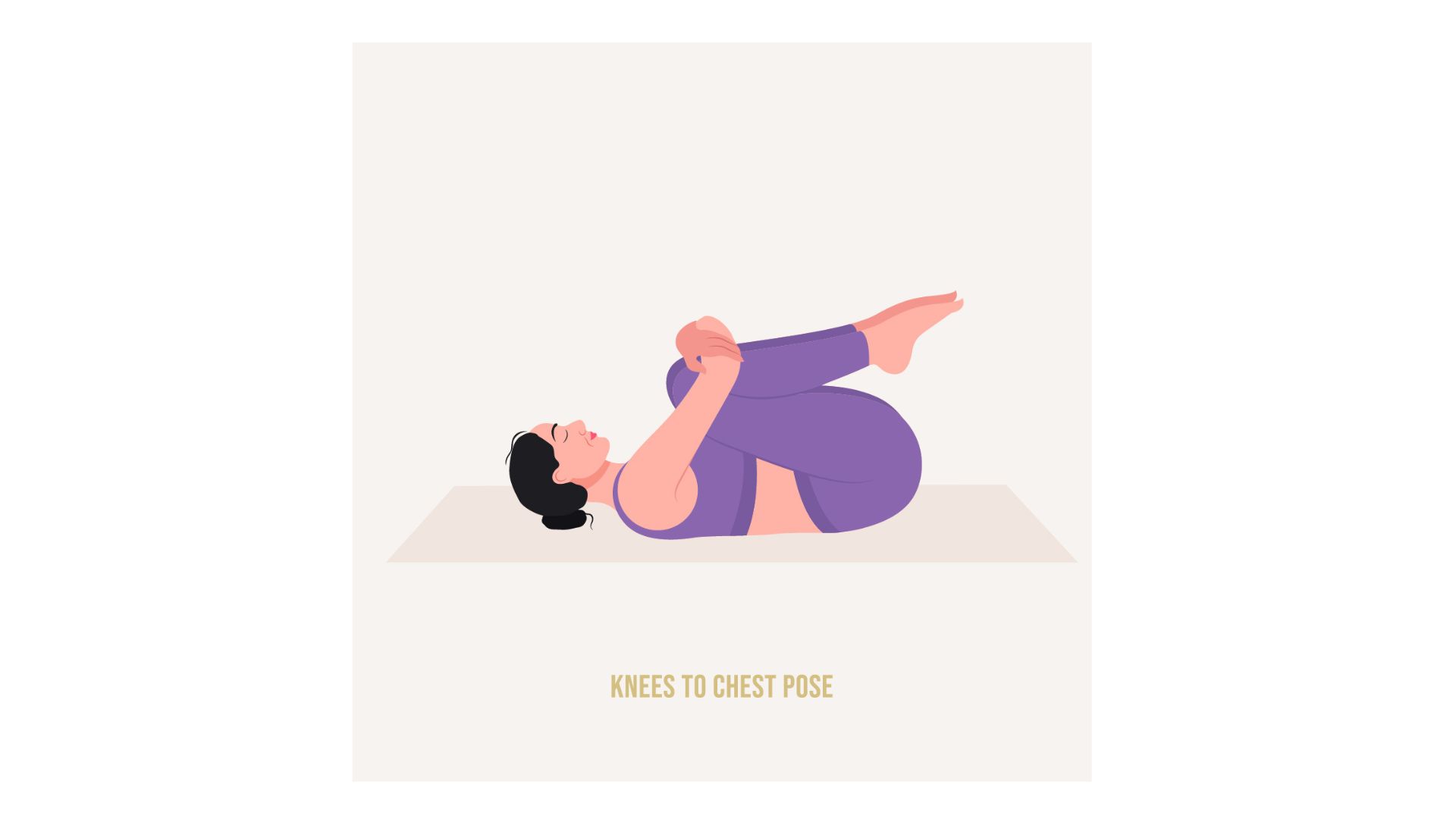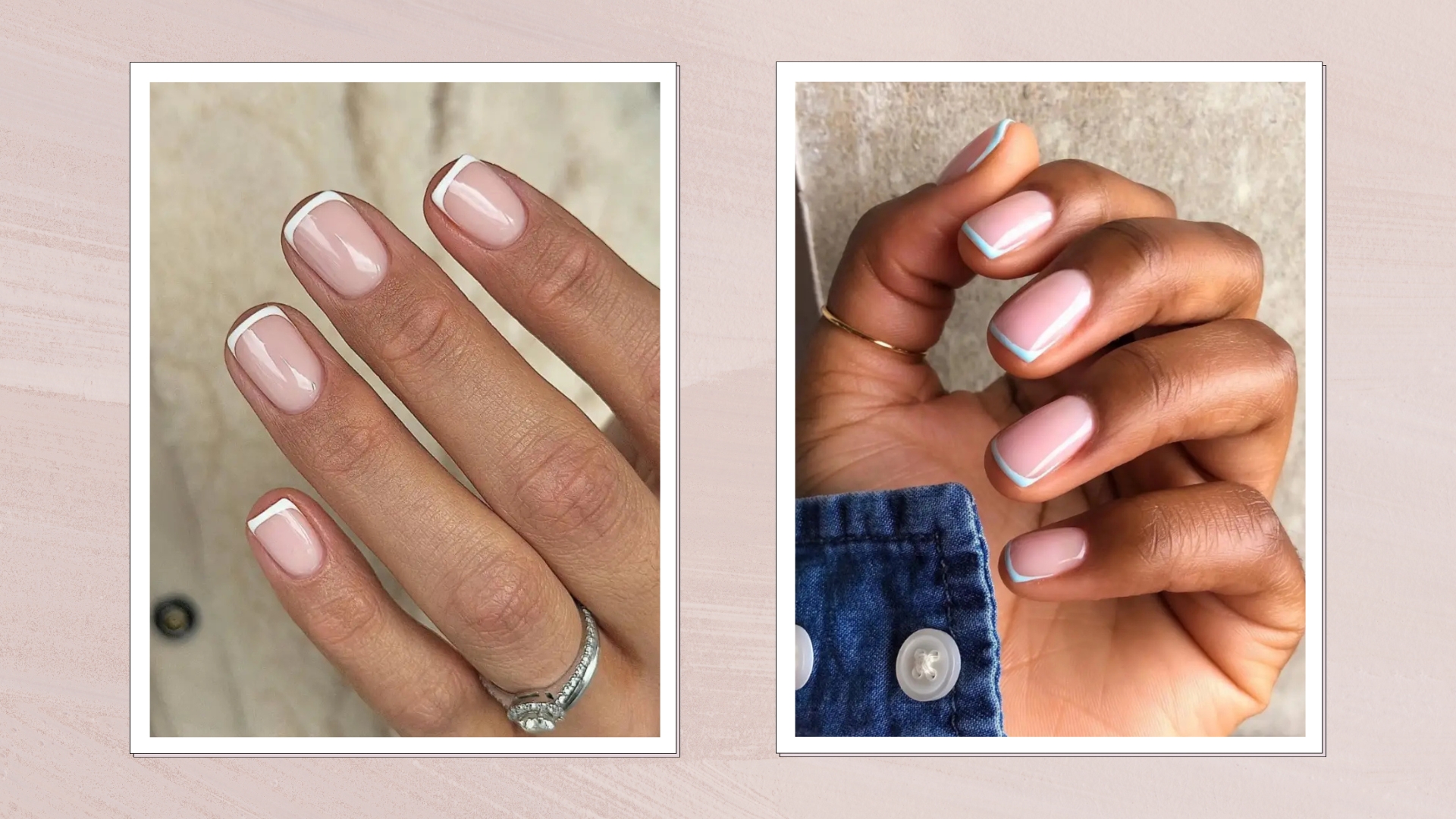What is pelvic floor yoga? Experts reveal the 4-part routine to help boost strength in these vital muscles
Doing pelvic floor yoga can help boost the strength and flexibility of the pelvic floor muscles. Here, the experts reveal the best moves to try at home

Pelvic floor yoga is one of the many exercises you can do to help maintain and improve the strength of the pelvic floor - a string of muscles that extend across the pelvis and support the vital organs in this area.
Women going through perimenopause will experience a huge range of menopause symptoms and changes to their bodies as a result of declining oestrogen levels. One part of the body which is often affected is the pelvic floor. It’s a part that can be easy to forget about - especially if you are experiencing other, more obvious symptoms like hot flushes or insomnia.
But it’s important to pay attention to your pelvic floor during menopause - weak muscles in this area can lead to health problems over time. If you’ve had children and can't exercise, cough, sneeze, or jump without urinating a little, you may know this to be true already.
Pelvic floor yoga is proven to help improve strength and flexibility in this area with exercises to rival even the best pelvic floor trainers, reducing the chance of such issues. Here, woman&home speaks to doctors specialising in women's health and pelvic floor experts to reveal the exercises to do and the benefits to be had.
What is pelvic floor yoga?
Pelvic floor yoga isn’t too dissimilar to a regular yoga workout. It focuses on gentle movement, breathwork, and mindfulness techniques, says Veronique Ellis, yoga teacher and founder of Evolve Wellness, and it "aims to improve awareness, flexibility and strength in these muscles, which can help prevent or alleviate issues like pelvic floor dysfunction, urinary incontinence, and pelvic organ prolapse."
The flexibility element is important here. It highlights the difference between pelvic floor yoga and regular kegel exercises, notes pelvic floor rehabilitation specialist Simone Muller. "While we need the pelvic floor to have strength, a muscle works better with strength and flexibility. Thinking has very much moved away from giving the blanket ‘just do kegels’ advice. Continuously contracting a muscle without the relaxation phase does not bring function."
Along with strengthening and stretching the pelvic floor, this type of yoga is excellent for those with a hypertonic pelvic floor, where the muscles are overly tight, and anyone dealing with low libido in menopause.
Sign up for the woman&home newsletter
Sign up to our free daily email for the latest royal and entertainment news, interesting opinion, expert advice on styling and beauty trends, and no-nonsense guides to the health and wellness questions you want answered.
Yoga teacher Sue Yen Wan says pelvic floor yoga can help women who are experiencing vaginal dryness or a drop in libido as they go through the menopause. "In yoga, we refer to the pelvic floor as 'Mulha Bandha,' an internal energy lock. Activating this lock throughout the practice encourages ongoing strengthening and maintenance of the muscles, promoting a fresh flow of prana (chi or life force) to nourish the area with oxygenated blood, maintaining pelvic health and strength," she says.
How to do pelvic floor yoga
There are a variety of stretches and poses you can do which will help strengthen your pelvic floor. If you already do yoga every day or you've done yoga for beginners, then they will be familiar to you. You can also make adaptations to concentrate on your breathing and pelvic muscles.
When doing these exercises, it's important to activate the pelvic floor - otherwise, you're just doing yoga as a workout. Yoga teacher Rose Leah Saltiel says: “Activating the pelvic floor can be done very easily. It is a subtle internal lift and activation of the pelvic floor and perineum."
Here's how to activate your pelvic floor in two simple steps:
- Squeeze your anus, as if you're stopping yourself from passing wind - but don't clench.
- Squeeze your vaginal muscles up and in, as if you're stopping yourself from urinating. Avoid pulling your stomach in when you do this.
"If you are starting from a place with a weak core, I recommend doing some Pilates-type floor-based core exercises before jumping into a full yoga practice," says Saltiel. Doing so could help you learn how to use a pelvic floor trainer as well, should you choose to.
Ready to go? Try these exercises.
Cat cow

As one of the best core exercises to do at home, Ellis recommends the cat-cow pose to engage your pelvic floor muscles while stretching out your back and abdominal muscles.
- Start on your hands and knees in a tabletop position with your wrists under your shoulders and your knees under your hips.
- Inhale and arch your back, dropping your belly towards the floor and lifting your head and tailbone towards the ceiling (Cow Pose).
- Then exhale and round your spine, tucking your chin to your chest and drawing your belly button towards your spine (Cat Pose).
- Flow between Cat and Cow poses with each inhale and exhale, coordinating your movements with your breath for 5-10 rounds.
Bridge

Wan says the Bridge pose is great for your pelvic floor muscles, core and glutes and will promote pelvic health.
- Lie on your back with your knees bent and ankles aligned, lift, and lower your bottom up and down.
- Inhale and squeeze your pelvic floor muscles as you lift your bottom and exhale.
- Hold the pose for 30 seconds or one minute, continuing to breathe deeply. Then release as you lower your bottom back to the ground.
Happy Baby

Happy Baby is also called 'knees to chest' pose.
Happy Baby is a great pose for releasing tension in your pelvic floor, Ellis says, as it elongates the muscles and stretches the surrounding muscles in your hips and pelvis.
- Lie on your back and bend your knees into your chest.
- Hold onto the outsides of your feet with your hands, flexing your feet towards the ceiling.
- Gently pull your knees towards your armpits while pressing your tailbone down towards the floor.
- Keep your head and shoulders relaxed on the mat and hold the pose for 30 seconds to one minute, breathing deeply into your belly while tensing and releasing your pelvic floor muscles.
Reclined butterfly

The Reclined Butterfly position can also be called the reclined bound angle.
Sarah Scudamore, founder of Mumology Movement, says the Reclined Butterfly pose is an excellent one for releasing tight pelvic floor muscles.
- Lie on your back, bring your legs into butterfly, by placing the soles of your feet together, and letting your knees drop to the sides.
- Place pillows or cushions under your knees so that your legs can fully relax in this position.
- Focus on breathing slowly and mindfully, tensing and releasing your pelvic floor muscles.
- You can stay in this position for as long as you feel comfortable but this could be anywhere from 5 to 10 minutes.
Saltiel says it’s important you don’t over-activate your muscles and tense too much during your practice though - this can cause the opposite effect and tire out your muscles by over-straining. She also recommends finishing your session with a Savasana (lying on your back with legs spread and hands relaxed) to reset your nervous system, rest, and lower your cortisol levels.
Does pelvic floor yoga work?
All of the experts W&H spoke to said yes - pelvic floor yoga is beneficial for women approaching, or going through, menopause. "Regular practice can lead to increased pelvic floor strength, better bladder control, reduced pelvic pain (including discomfort during penetrative intercourse) and improved overall wellbeing during this stage of life," says Wan.
There's also plenty of evidence, from the Medical University of Silesia and Pennsylvania State University, to suggest that regular exercise can help reduce the risk of longer-term health conditions linked to declining oestrogen levels, such as muscle loss and osteoporosis.
Pelvic floor yoga is not a catch-all though, so it's important to consider other options to deal with menopause and perimenopause symptoms too. If you have concerns about your symptoms and want to discuss your options, contact your doctor.
Results of pelvic floor yoga will also depend on individual factors though, warns Ellis, such as "the specific needs, consistency of practice, and proper execution of poses."
Benefits of pelvic floor yoga
- Increased strength and tone in the pelvic floor muscles.
- Improved flexibility and mobility in the pelvic area.
- Enhanced awareness and mindfulness of the pelvic floor muscles.
- Relaxes and reduces tension in the pelvic area.
- Better posture and alignment, reducing strain on the pelvic floor.
- Encourages a holistic approach to pelvic health, incorporating breath work and mindfulness techniques.
- Supports overall wellbeing and stress management, which indirectly benefits pelvic floor function.
Is yoga or Pilates better for the pelvic floor?
Both yoga and Pilates are good for pelvic floor strength but work very differently. "Yoga emphasises breathwork, mindfulness and holistic wellbeing, cultivating overall body awareness and mindset. Meanwhile, Pilates focuses more on building core strength and stability through controlled movements and exercises," says Wan.
Benefits of a full-body Pilates workout include improved pelvic floor muscle control and coordination and alleviating symptoms of pelvic floor dysfunction, such as urinary incontinence or pelvic organ prolapse. Even a low-impact wall Pilates workout can make a difference for those new to the practice.
"Pilates can be a great way to connect with those core muscles, but what I often see in women in their 40s and beyond, is that they need more mobility, more stretch in their whole body, more down-training of the nervous system and muscles with a mindful approach to movement, and so for me yoga wins," says Scudamore.
The method you use to improve your pelvic floor strength will be down to personal preference, ultimately. Some people may choose to use a combination of yoga and Pilates. Whichever you choose, it should be comfortable and enjoyable and suit your needs and abilities.

Kat Storr has been a digital journalist for over 15 years after starting her career at Sky News, where she covered everything from world events to royal babies and celebrity deaths. After going freelance eight years ago, she now focuses on women's health and fitness content, writing across a range of UK publications.
From perimenopause to the latest fitness trends, Kat loves researching and writing about it all. She's happy to give any fitness challenge a go and speaks to experts about wellbeing issues affecting people every day.
-
 We're in awe of Sienna Miller's easy-going and 'piece-y' hairstyle and how perfect it is for spring
We're in awe of Sienna Miller's easy-going and 'piece-y' hairstyle and how perfect it is for springThis laid-back hairstyle is - quite literally - making waves this season
By Naomi Jamieson
-
 We never thought we'd see this 'dated' manicure make a chic comeback, but here it is - and we're on board
We never thought we'd see this 'dated' manicure make a chic comeback, but here it is - and we're on boardClean and angular, short square French tips are a go-to this season for a practical but stylish manicure...
By Naomi Jamieson